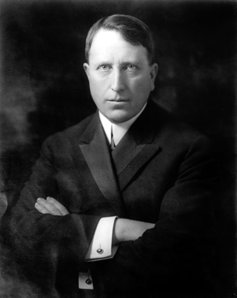The Single Source of Conflict
Who doesn’t love a good fight? I still remember junior-high cries of “Fight! Fight!” as kids rushed to circle two combatants. But while conflict rivets attention, finding the cause of the conflict is much more useful than watching it.
What if there was a common source of all conflict? Seems pretty impossible doesn’t it? After all, fights start because of bullying, name-calling, threats, accusations, jealousy, and hundreds of real or imagined slights or offenses. How could there be a single cause?

Well, try this on for size, it’s called the Third Party Law, and it was discovered by L. Ron Hubbard. It says: “While it is commonly believed to take two to make a fight, a third party must exist and must develop it for actual conflict to occur.”
Here’s an example. Mother and father have a boy, age 10. They accept an eight-year-old foster child, a girl. The boy is resentful of having to share his parents with this “outsider,” so he tells the girl that his parents don’t like her, that the only reason she’s there is because they get money for keeping her. He then tells his mother that the girl doesn’t like her new family, she liked it better at an earlier foster family and wants to go back there. The girl feels unwanted, the mother—who has tried to make the girl feel welcome—feels hurt, and the friendliness that previously existed evaporates. Arguments ensue. Other disputes and upsets are added to the conflict until the girl is sent elsewhere. The upsets seem to be between two parties—the mother and the girl. However, the boy (the third party), unseen and unsuspected, actually caused the conflict.
When the culprit is located and exposed, the conflict disappears as if by magic.
The first impulse is to look at the issues involved—the sense of alienation on the part of the girl, the mother’s hurt feelings and the things said while angry or challenged, the issue of money, the history of the girl, the mother’s motivation for accepting a foster child, and so on. But that will not resolve the conflict, for the resolution in this case hinges not on “issues” but on a person. To find the source of the conflict one must look for the person who created and developed it in the first place.
To identify the third party, one asks the mother and the girl questions such as: “In this family, have you been told you were in trouble? Have you been told someone was bad? Have you been told someone was doing wrong? Have you been told a group was bad?” For each question, one finds out what was said and who said it. One then writes down the answers from both parties, compares the answers and the person who appears most often in the answers is the third party.
When the culprit is located and exposed, the conflict disappears as if by magic.
Recently, Lady Gaga said something quite interesting that relates to the subject of conflict. Hate is “an invisible snake,” she said, “that while it’s planning to make its attack, it is thinking to itself ‘I am going to divide my enemy into smaller, less strong groups. And then I’m going to make them hate each other, so that it’s easier to take them down.’” She is right about the outcome, but “hate” is a generality. If one accepts the Third Party Law, it is not the elusive force of “hate,” but rather third parties—individuals and groups covertly bent on harm—that spark the flames of conflict, and make them grow.

Today, religious conflicts rage in many areas of the world. Muslims and Buddhists in conflict in Myanmar, with half a million Rohingya Muslims seeking asylum in Bangladesh, the continuing Israeli-Palestinian conflict, even conflict between two main branches of Islam—the Shia and the Sunni—which sparked the Syrian civil war.
Ironically, Jews, Christians and Muslims share many things. Most importantly, they worship the same God—the God of Adam, Abraham and Moses—and they see man as essentially spiritual.
So can this “dividing of an enemy into smaller less-strong groups that hate each other,” as Lady Gaga says, be at the heart of many racial, political, social and economic conflicts and can those be resolved using the Third Party Law? If so, who are the third parties that create and perpetuate those conflicts?
Media news outlets know “conflict” attracts readers and viewers—just as a schoolyard fight attracts students. So media will often slant their coverage to increase the perception of conflict.

When artist Frederic Remington went to Cuba to cover a revolution in 1895, he cabled back to his office that there was no war and he should return home. His boss, New York Journal Publisher William Randolph Hearst—who had been pushing for the United States to enter the conflict and was spreading anti-Spanish propaganda to inflame the public—cabled back: “You furnish the pictures, I’ll furnish the war.”
Then the U.S. Battleship Maine mysteriously blew up in Havana Harbor—the cause was never discovered—but Americans, spurred on by Hearst and other journalists, were itching for a fight. So on April 25, 1898, the Spanish-American War began with the battle cry “Remember the Maine.” It sold lots of newspapers.
Even the Russian Revolution had a third party: Germany. German officials sent Russian revolutionary Vladimir Lenin in a sealed railroad train (since Germany and Russia were at war and this would avoid having to declare who or what was on the train) into Russia. Germany wanted Russia in revolt and weak so Russia would stop fighting and pull out of World War I. It worked. The Czar was overthrown by Lenin’s forces and Lenin withdrew from the war.
Bombings, mass shootings, chaos. Who benefits from a nation divided, suspicious and at war with itself?
So if everything from schoolyard fistfights to outright wars can be explained by the Third Party Law, wouldn't it be worthwhile to make it known and use it to resolve conflicts?
The Korean conflict has continued for nearly 70 years. Who is the third party that keeps creating it?
The United States invaded Afghanistan in 2001 and it continues today, 16 years later. Who is the third party?
Democrats and Republicans have been polarized with little or no cooperation across the aisle. Who benefits from that?
Bombings, mass shootings, chaos. Who benefits from a nation divided, suspicious and at war with itself?
I have a modest proposal. Let’s send journalists into conflicts armed with knowledge of the Third Party Law. Instead of reporting on the suffering, death, wasted efforts, hostile communications, and “the futility of it all,” their job is to sit with the combatants and ask the following questions: “Have you been told you were in trouble? Have you been told someone was bad? Have you been told someone was doing wrong? Have you been told a group was bad?” Ask what was said, who said it, and write down the answers, then do the same with the other side of the conflict.
The reporters then take the results to their editors who tally the results, spot the third party—or send the reporters back in to get more information—and then edit and publish the results.
Democrats, Republicans and Independents would once again invite one another over for dinner, get together for golf and send holiday cards. They would cooperate or not based on the issues, and not on some hidden animosity fueled by a third party bent on creating rage and hostility. They might even laugh at the same jokes.
Instead of being, in some cases, the third party or exacerbating conflict, journalists would spread oil upon troubled waters and everyone would clamor to buy information as to who was behind the latest conflict. Marriages in trouble would suddenly respond to counseling once their third parties were spotted. Families could assemble for Thanksgiving without heated arguments beyond the usual joking as to which is the best team, Oregon or Oregon State and the Astros or the Dodgers.
Reality shows could also dig into conflicts, expose the third party in front of a live studio audience and see legal, marital and economic disputes unravel.
Minus third-party meddling, international conflicts between religions, countries, philosophies and economic systems could be debated on the actual issues and progress made.
Throughout the world, old conflicts and rivalries would fall, the third parties scorned by all, and conflict would become unfashionable. And finally, after many, many decades, Cold War nuclear-tipped missiles could finally go to sleep.










